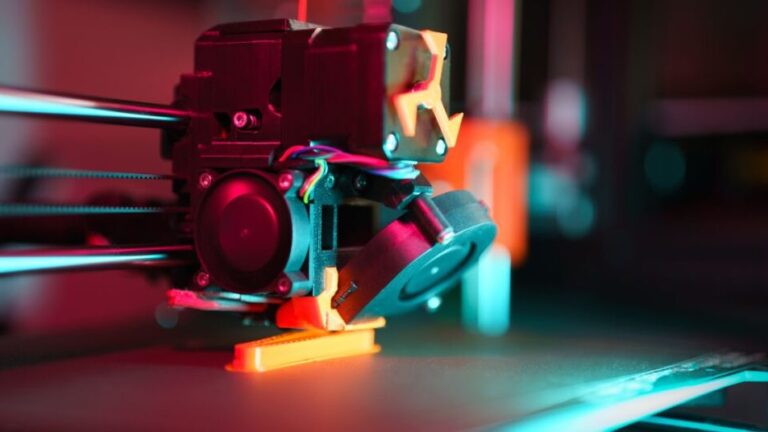The manufacturing industry is undergoing a monumental transformation, driven by the rise of commercial 3D printing services. Once considered a niche technology, 3D printing has evolved into a powerful tool for mass production, customization, and innovation. By offering unparalleled flexibility and efficiency, it is reshaping how businesses design, prototype, and manufacture products.
As we look to the future, commercial 3d printing services is poised to become a cornerstone of modern manufacturing, enabling businesses to adapt to changing market demands, reduce waste, and unlock new opportunities.
How 3D Printing is Redefining Manufacturing
1. From Prototyping to Production
Initially popular for rapid prototyping, 3D printing is now capable of large-scale production. Advanced printers can produce high-quality, durable parts that rival those made with traditional methods. This shift enables businesses to:
- Manufacture complex designs with precision.
- Produce small batches or custom parts economically.
- Transition seamlessly from prototype to final product.
2. Customization and Personalization
Consumers increasingly seek products tailored to their preferences. 3D printing makes mass customization a reality by allowing manufacturers to:
- Create personalized goods at scale.
- Adjust designs on-the-fly without costly retooling.
- Cater to niche markets with specialized products.
3. On-Demand Manufacturing
3D printing supports just-in-time production, reducing the need for large inventories. Businesses can:
- Produce parts only when needed, minimizing storage costs.
- Respond quickly to market changes or customer demands.
- Reduce lead times by localizing production.
Key Benefits Driving Adoption
Sustainability
3D printing is inherently resource-efficient, using only the material needed to build a product. Additionally:
- Recyclable and biodegradable materials are becoming more common.
- Localized production reduces the carbon footprint associated with shipping.
- By reducing waste, 3D printing aligns with global sustainability goals.
Cost Efficiency
- Eliminating the need for expensive molds and tooling lowers upfront costs.
- Material usage is optimized, reducing waste and saving money.
- Small production runs are economically viable, unlike traditional methods.
Design Freedom
Unlike traditional manufacturing, which often limits creativity due to tooling constraints, 3D printing enables the creation of:
- Complex geometries and intricate designs.
- Lightweight yet strong components.
- Consolidated parts, reducing the need for assembly.
Future Trends in Commercial 3D Printing
1. Advanced Materials
The development of new materials, such as high-strength composites, bio-compatible polymers, and metals, will expand the applications of 3D printing across industries like healthcare, aerospace, and construction.
2. Speed and Scalability
Next-generation printers are improving in speed and capacity, making 3D printing viable for mass production. Technologies like multi-jet fusion and binder jetting are leading the way.
3. Integration with AI and IoT
- AI: Optimizes designs for 3D printing, reduces material usage, and enhances precision.
- IoT: Connects 3D printers to smart factories, enabling automated workflows and real-time monitoring.
4. Distributed Manufacturing
In the future, businesses may operate decentralized networks of 3D printers. This approach allows for localized production, reducing shipping times and costs while improving supply chain resilience.
5. Medical and Bioprinting Innovations
The healthcare sector will see breakthroughs such as:
- Customized prosthetics and implants.
- 3D-printed organs and tissues for transplantation.
- Patient-specific surgical tools and models.
Industries Leading the Charge
1. Aerospace and Automotive
3D printing enables the production of lightweight, durable components that meet stringent performance standards. This reduces fuel consumption and enhances overall efficiency.
2. Healthcare
From prosthetics to dental devices, 3D printing provides custom, patient-specific solutions that improve outcomes. Emerging bioprinting technologies promise to revolutionize organ transplantation.
3. Consumer Goods
Brands are using 3D printing to offer personalized products, from footwear to electronics. This trend is transforming customer expectations and redefining retail.
4. Construction
Large-scale 3D printers are creating entire buildings, offering a sustainable, efficient alternative to traditional construction methods.
Challenges and Opportunities
While commercial 3D printing holds immense potential, some challenges remain:
- High Initial Costs: Investing in industrial-grade printers and materials can be expensive.
- Material Limitations: Although options are expanding, not all materials are suitable for 3D printing.
- Skilled Workforce: Businesses need trained professionals to operate and maintain advanced printers.
However, these challenges also present opportunities for innovation. As technology advances, costs will decrease, materials will diversify, and training programs will bridge the skills gap.
The Role of Commercial 3D Printing in the Future of Manufacturing
Commercial 3D printing is more than a technological advancement; it’s a shift in how businesses think about production. By combining sustainability, flexibility, and efficiency, 3D printing is poised to:
- Revolutionize supply chains by enabling localized, on-demand production.
- Drive innovation by freeing designers from traditional constraints.
- Empower businesses to meet evolving customer demands for customization and speed.
Conclusion
The future of manufacturing lies in the adoption of commercial 3D printing services. By embracing this transformative technology, businesses can reduce costs, improve efficiency, and innovate at an unprecedented pace. As advancements continue, 3D printing will not only redefine how products are made but also reshape industries and economies worldwide.
Now is the time for manufacturers to explore the potential of commercial 3D printing and position themselves at the forefront of this exciting revolution.
